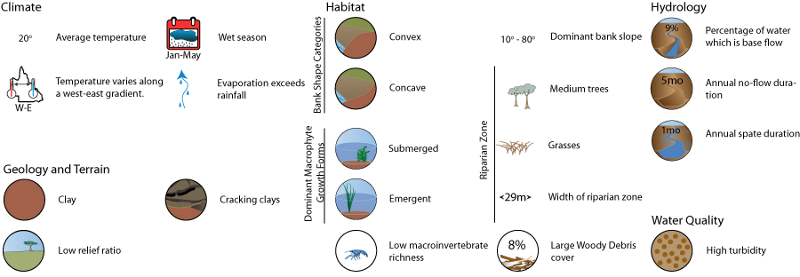|
|
Queensland Murray-Darling Freshwater Biogeographic ProvinceQueensland Murray-Darling Freshwater Biogeographic Province  Click on elements of the model or select from the tabs below
The Queensland Murray-Darling Freshwater Biogeographic Province (FBP) consists of the Border Rivers, Moonie, Balonne-Condamine, Warrego and Paroo drainage basins, and is located in the south-west of the State. The headwaters of these basins rise in the Great Dividing Range and the rivers flow across the Queensland-New South Wales border to eventually form one of the largest catchments in the world[1]. The rivers within the FBP are flat over much of their courses and floodplains are extensive. Prolonged periods of low or no flow are typical as are unpredictable high flow events that inundate the floodplains ephemeral lakes and wetlands. Much of the FBP can be considered arid or semi-arid, experiencing infrequent rainfall. The FBP incorporates the Brigalow Belt, New England Tableland, Mulga Lands, and Mitchell Grass Downs vegetation bioregions. Many fauna and flora species found in the Queensland Murray-Darling FBP do not occur elsewhere in Queensland.
References
Last updated: 22 March 2013 This page should be cited as: Department of Environment, Science and Innovation, Queensland (2013) Queensland Murray-Darling Freshwater Biogeographic Province, WetlandInfo website, accessed 18 March 2024. Available at: https://wetlandinfo.des.qld.gov.au/wetlands/ecology/aquatic-ecosystems-natural/riverine/freshwater-biogeo/murray-darling/ |

 — Department of Environment, Science and Innovation
— Department of Environment, Science and Innovation

